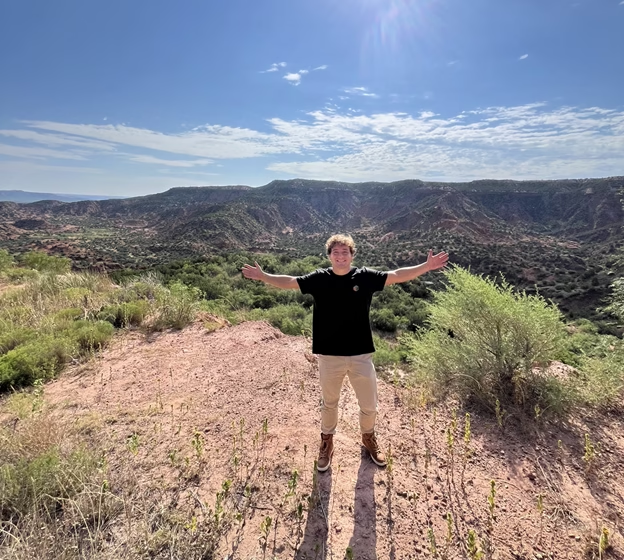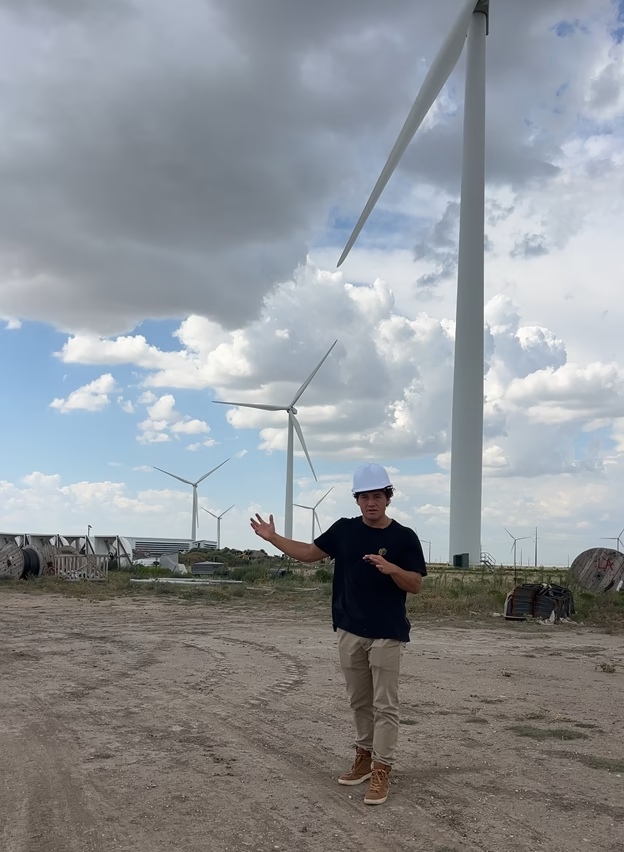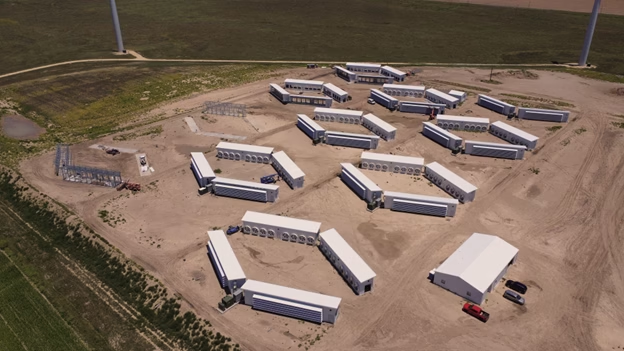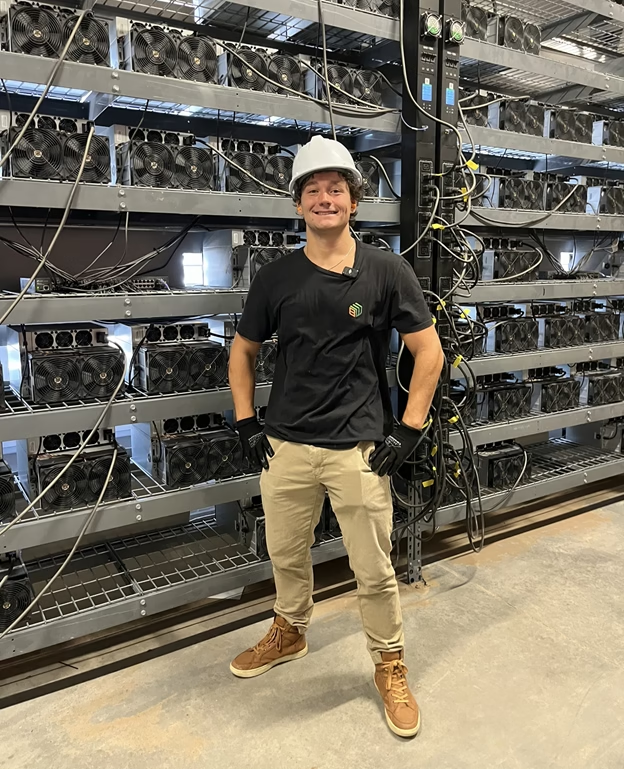Visiting Blockware’s Partner Facility:
Soluna Project Dorothy 2
I recently had the opportunity to visit one of Blockware’s partner Bitcoin mining hosting facilities in Texas. The journey itself set the tone: two flights, a two-hour drive, and then I found myself in the heart of the plains where renewable energy and Bitcoin mining intersect.
The people of Texas were as welcoming as I’m accustomed to in the South, though the landscape stood in contrast—fewer trees, more cattle, and vast stretches of open sky. We stayed in Amarillo, a town with strong “last frontier” vibes where the Midwest begins to transition into the deserts of the American Southwest. Even Amarillo, far from major cities, was still two hours from the mining site. After a quick Buc-ee’s stop and a scenic drive through valleys and plains, we finally arrived at Soluna’s Project Dorothy 2 facility.

For years, I’ve researched the relationship between Bitcoin mining and renewable energy. This visit brought theory into reality.
Project Dorothy 2 is co-located on a large wind farm. Before Bitcoin miners arrived, about 40% of the farm’s power output was wasted because there was no local demand and the cost of transmitting electricity over long distances was too high. By plugging in miners on-site, that excess electricity can now be monetized.
This is what critics of Bitcoin’s energy use often overlook: miners consume stranded energy that would otherwise go unused. In doing so, they act as a free-market buyer of last resort, creating a new revenue stream for renewable producers. Instead of relying on subsidies, renewable operators can sell excess power to Bitcoin miners—making new projects more financially viable.
Think of it like a restaurant that always has a guaranteed buyer for leftover food. With that safety net, the restaurant can produce more without worrying about waste. Bitcoin provides the same safety net for renewable energy producers.

The Texas Bitcoin mining facility itself was impressive. Containers were positioned in a diamond-shaped layout, with fans blowing warm air into the center. This created a chimney-like airflow that carried heat away, keeping miners cool even in the Texas summer. Despite visiting in August, the facility’s design kept temperatures surprisingly mild around the machines.
An even more memorable part of the trip was helping clients plug in their own miners. We brought three different Blockware clients—one a military veteran turned entrepreneur, another a mental healthcare practitioner, and a young full-time miner close to my age. Each came from a very different background, yet they shared the same goals: accumulate Bitcoin and optimize tax efficiency through mining.

Working remotely for Blockware, my day-to-day often feels abstract—focused on research, analysis, and digital communication. Visiting the site made it clear just how tangible Bitcoin hosting and mining at scale really is.
Most people never see a mining machine in person (and frankly, few would want one running in their home). That’s the value of hosted mining: professionals operate facilities in energy-rich regions, giving clients exposure to Bitcoin mining without the headaches.
For anyone curious about what large-scale Bitcoin mining really looks like, I highly recommend watching the mini-documentary we produced during this visit to Soluna’s Project Dorothy 2.
